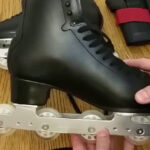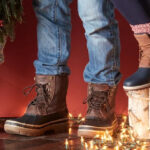Cleaning your waders and boots is essential for taking care of your gear. Not only will it make them last longer, but it will also help to prevent bacteria and other organisms from growing and causing odors. This article will show you how to clean waders and boots using a few simple steps. Let’s get started!
Waders and boots are great for fishing, but they are also great at holding in bacteria and other organisms that can cause odors. Therefore, cleaning your waders and boots is extremely important to keep them performing their best. How often you clean them will depend on many factors, such as weather conditions, how long you wear them between washings, etc.
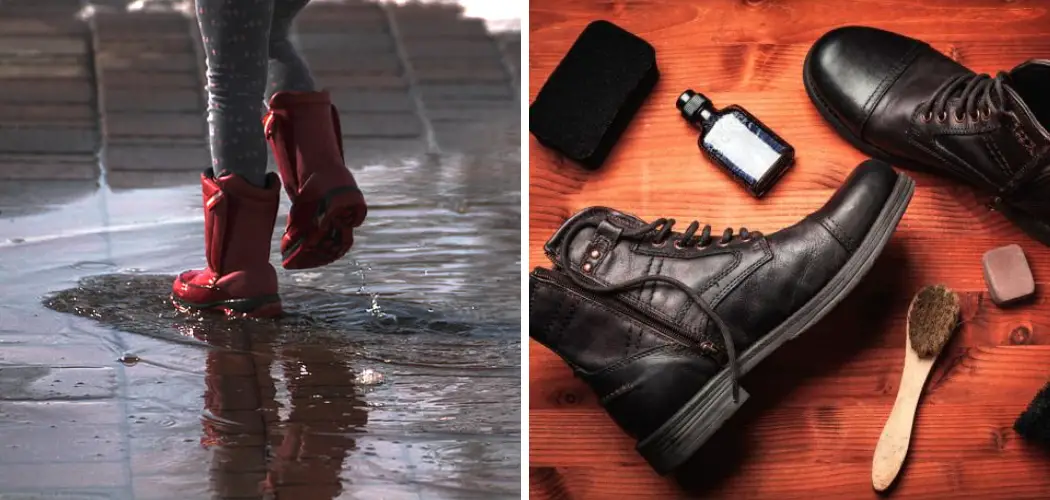
A Step By Step Guide on How to Clean Waders and Boots
Step 1: Determine How Dirty the Waders and Boots Are
The first step to cleaning waders and boots is determining how dirt they are. How much mud, scum, debris, and oil on your gear will determine what steps you must take to clean them properly. If they are just muddy, you can brush off as much of the mud as possible with a soft bristle brush or cloth.
However, it is essential not to use anything abrasive on the boot’s materials because this could cause damage. If your boots are just dirty, but not too dirty, they can be rinsed off with water.
Step 2: Disinfect Rubber
Rubber waders and rubber boots can be disinfected simply by rinsing them with warm water. Then, the inside of the wader or boot should be sprayed with a disinfectant that is safe for rubber materials such as rubber cleaner or Lysol Neutra Air Multi-Surface Disinfec ant spray. After spraying down the inside of the wader or boot, it should be air-dried before wearing.
You want to disinfect your waders and boots because they often contain microorganisms such as bacteria and fungi, which could cause illness if ingested by humans.
Step 3: Restore Rubber
You’ll want to use a cleaner specifically designed for rubber to restore your rubber waders and boots. How well the cleaning method works will depend on the type of material that makes up your waders or boot’s exterior, but in general, a soft bristle brush should be used while lightly scrubbing the surface with dish soap. once it is thoroughly cleaned, rinse off the soap using warm water.
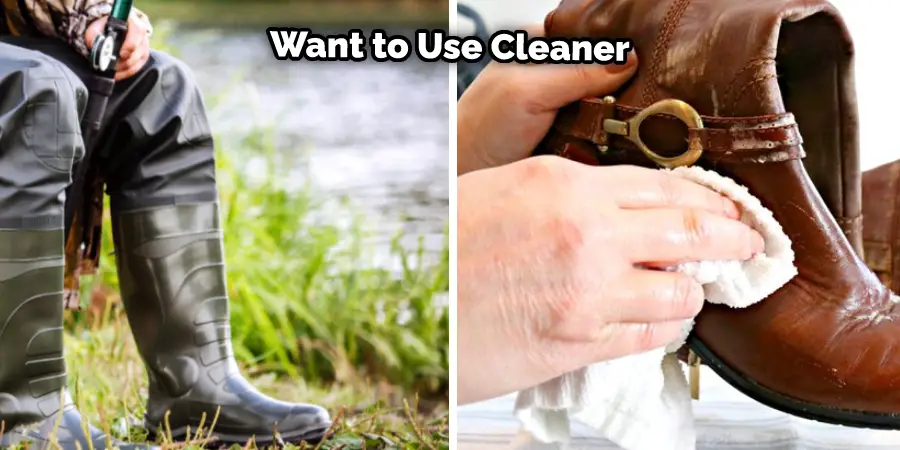
Then spray or pour a waterproofing agent onto the exterior of your boots so they can be adequately restored. If you wear them regularly, this process should be repeated every three to four months.
Step 4: Clean Synthetic Insulation
To clean synthetic insulation such as Thinsulate, you’ll want to use a specialized cleaner formulated for the purpose. You can find this at most more considerable hunting or outdoors stores, but if you cannot get hold of it, you can use warm water combined with ish soap. How much dish soap should be mixed in will depend on how dirty the ins action is.
Warm water alone must be used to clean any not too bad stains. After cleaning, rinse off the excess soap using warm water and then hang the item up to air dry for 24 hours before wearing or storing them away. How often you need to clean your synthetic insulation will depend on the amount of oil that gets into it over time, but it should be done every few months.
Step 5: Remove Stains on Mesh or Other Breathable Materials
When cleaning waders and boots with breathable materials such as mesh, the first step is to remove any large debris which may have become stuck on them. Then gently brush off any mud or dirt using a soft bristle brush or cloth, followed by rinsing the material using cold water.
How well this process works depends on how dirty they are, but if there are stains afterward, an enzymatic cleaner must be used to get r of them. If this fails to work, use some dish soap mixed with cold water. How often you need to clean your waders and boots will depend on how much they are used, but it should be done every month or so if worn regularly.
Step 6: Clean Rubber Oil-based Stains
If mud or other oil-based stains get into your rubber boots or waders, then tread lightly in clean first them. first, try brushing off any visible clumps followed by spraying the stained area with an enzyme cleaner like Nature’s Miracle Pet Stain & Odor remover. After allowing it to soak in for 10 minutes, use a cloth dampened with warm water to wipe away the dirt.
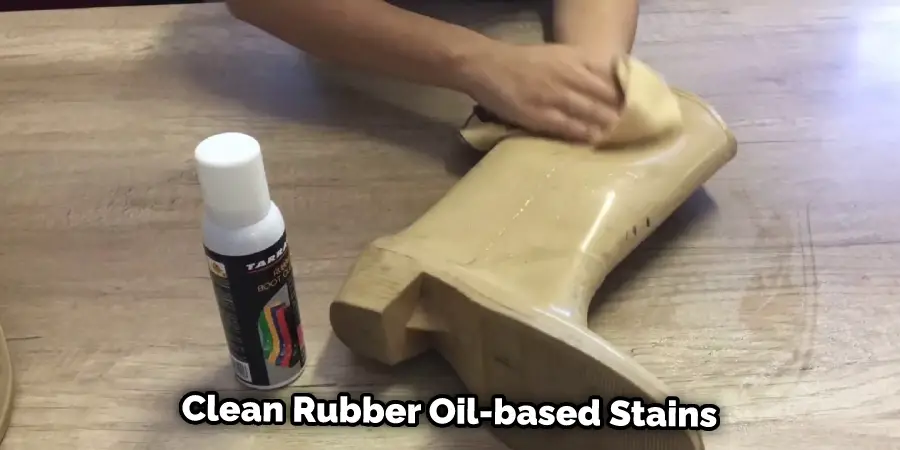
How well this process works depends on how much the stain is left afterward, but if there isn’t too much of an oily stain, it should be able to get rid of the majority. How often you need to clean oil-based stains will depend on how much the boots are used, but it should be done every couple of months if they are frequently covered in mud or dirt.
You Can Check It Out Clean Jazz Shoes
Step 7: Dry Your Waders and Boots
How you dry your waders and boots after cleaning them will affect how reserved they are. The best way would be air-drying them in the heat, but this method should not be used if it is raining because humidity can damage rubber materials. Instead, hang them up indoors with a space heater nearby to blow warm air into the room if it’s cold outside.
How often you need to dry out your waders or boots after washing depends on how often they are worn, but it should be done every three months at least for maximum performance.
Step 8: Brush off Dirt or Dry Clean
If you don’t want to put your boots or waders in a washing machine, another option is using a brush with stiff bristles. How well this process works will depend on the type of material that makes up your boot’s exterior, but in general, it should be able to get rid of any tiny clumps of mud or dirt which have become stuck into them.

How often you need to clean your waders and boots will depend on how much mud and oil gets into them over time, but it should be done every couple of months if they are frequently covered in mud or dirt.
Step 9: Treat Rubber Seams with Waterproofing Finishes
One final step you can take when cleaning rubber boot seams like those on the Patagonia Men’s Torre III Insulated Snow Boots is applying a waterproof g finish. How well this works will depend on the amount of oil that has gotten into them over time, but when used regularly, it should keep out any small amounts that get in from time to time.
How often you need to repeat this process will depend on how much your boots are used and what materials they are made from, but once every couple of months should be sufficient for the people. These steps will help in how to clean waders and boots.
You Can Check It Out Clean Gucci Shoes
Tips and Warnings
Tips
- Try to clean waders and boots when they are dry. If they are wet, store them in a clean plastic bag until you get to the cleaning process.
- Clean your boots with soap and water. People consider it best to use dishwashing liquid for this job, but there is no need to go that far if the regular hand or body soap works.
- Layout newspaper on the grass where you plan to wash your waders and boots – it’ll make clean up easier.
- After cleaning, set out in the sun for several hours to dry entirely before stinging away. It’s also good practice to put them in a large plastic trash bag or tie them together in pairs by their laces so that they won’t get separated.
- If you wish, use a leather protectant on the boots to keep them soft and extend their life.
- You can also treat waders with water repellent spray after they are clean. Spray until damp and dry in the sun for several hours before storing away.
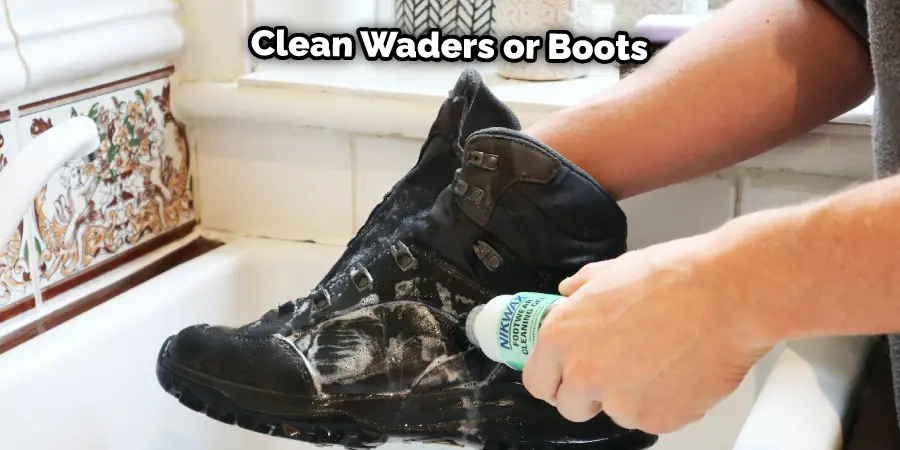
Warnings
- Be sure to read the washing instructions on your waders, boots, and other gear.
- Keep children away from equipment that has been cleaned with detergents or bleach as these can leave harmful residues on items. It’s also a good idea to keep separate waders, boots, and other gear for kids since their bodies are still growing, and they could be harmed by chemicals left on the products.
You Can Check It Out To Style Nike Blazers Women’s
Conclusion
We hope this article on how to clean waders and boots Was helpful. First, you want to make sure you are keeping your waders and b ts clean. This will help them stay in better condition, last longer, and be more comfortable for the next time you use them. Now get started with cleaning your waders or boots; take a bucket of water that is warm b not hot!
Fill it about halfway, then add dish soap into t mixture. The following steps are to put on rubber gloves before scrubbing away at any dirt or stains using an old toothbrush f needed. Everything dries out thoroughly before storing back away until they need another washing session!

